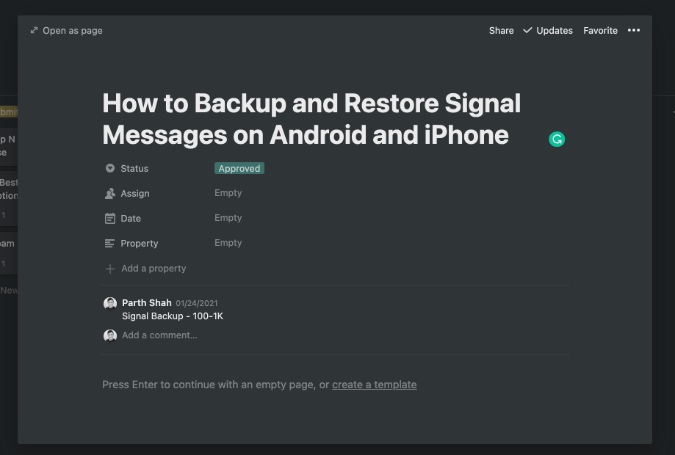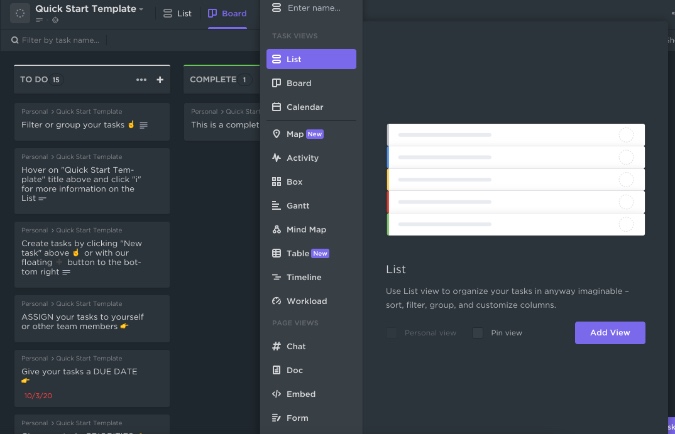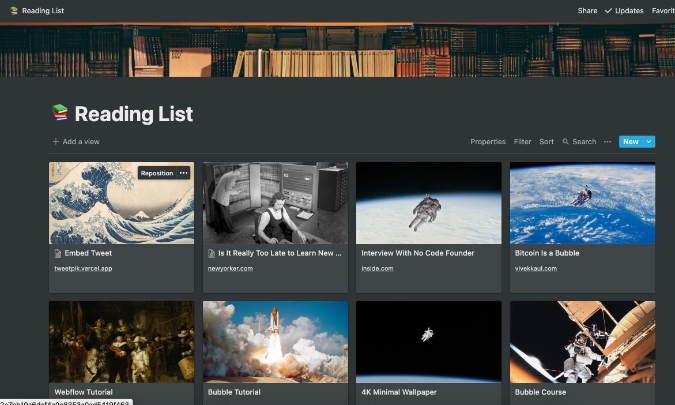Work from home is the norm these days. Many IT companies including Twitter, Spotify, Google, and Salesforce are encouraging employees to get things done from the home. Trello, Asana, and Jira are some of the traditional tools to manage projects and tasks like a pro. Recently, we have seen a new category of software like Notion, Coda, ClickUp, etc. that takes a modular approach and offers more customization and flexibility to suit user needs.
Among them, Notion and ClickUp are shaping up to be two of the most preferred workplace solutions out there. If you are getting confused between the two software, you have come to the right place. Let’s compare Notion to ClickUp and see which one fits your use case.
Notion vs ClickUp
The comparison will be based on cross-platform availability, UI, UX, templates, sharing, price, features, and more. Let’s get started.
Cross-Platform Availability
Cross-platform availability matters a lot when it comes to project management apps. Your team members might be on different platforms and some might prefer to manage and view tasks on mobile devices on the go.
Notion is available on iOS, Android, Mac, Windows, and Web. To provide a seamless experience across platforms, the company uses the same UI on mobile, PC, and web.
However, Notion mobile apps are a major letdown. Instead of being native, they are essentially web wrappers and takes too much time to complete simple tasks.
ClickUp has got you covered on all the platforms you can think of. The software is accessible on Android, iOS, Windows, Mac, Linux, and Web. ClickUp is also available as a plugin for Gmail and Outlook.
UI, UX, and Getting Started
Notion offers a giant blank canvas upfront. You can either organize from scratch or use templates to get started.
The major options, such as pages and sub-sections, are on the left. The thing about Notion is, it won’t throw every UI element and editing option at the user. Some even term Notion as UX disaster as every option is hidden away and I have seen users giving up the software due to the current implementation.

ClickUp takes a conventional approach for navigation. The organization tries to mimic how a traditional company operates. You can create a workspace and add different sections such as Sales, Marketing, Accounting, Manufacturing, and other departments to it.

Overall, I found ClickUp’s UI to be more polished and better organized compared to Notion’s plain approach.
Templates and Board Views
Templates play a major role in both ClickUp and Notion. Speaking of Notion, I would highly recommend you to start with one of the project management templates.
In the example below, I’m using the traditional Kanban view to organize articles at TechWiser. I like how Notion offers to add as many views to a single board. Simply click on the ‘+’ button and you can implement Lists, Timeline, Gallery, and Calendar view to a project.

Each card allows you to add details such as date, assign users, comments, and you can even more properties like URL, Email, Telephone, etc.

ClickUp once again trumps Notion with more choices. The software offers a total of 124 templates to choose from. The real action happens when the software treats you with several board views.

You can add Board, Calendar, Activity, Gantt, Mind Map, Timeline, Workload, and more. Users have the flexibility to customize and add as many board views to space.

With each task, you can add estimated time, time tracking, subtasks, attachments, comments, and more.
Import From Other Services
Notion allows you to import your boards and tasks from Asana and Trello only. ClickUp plays fine with more third-party software such as Basecamp, monday.com, Wrike, Todoist, and of course, Trello and Asana.
Features and Sharing
Notion is more than a mere project management tool. Using Notion templates, you can build a perfect travel plan, subscription tracker, finance manager, and more. The possibilities are endless here. It’s up to the user on how he wants to utilize the software.

ClickUp offers a killer feature called Dashboard. Using a centralized dashboard, you can add chats, checklists, embeds, and integrate as widgets to create your control center.

The software also allows you to create a doc for the team to review ongoing project details, rules, and other feedback.
The sharing works seamlessly on both software. Invite as many members to a project, tag them, assign users, and receive feedback in real-time.
Price
Notion is completely free for personal use. As for team sharing, you can invite up to 5 users to a team. The paid plans start at $4 per member per month.
The free ClickUp plan is limited in terms of storage. At $5 per member per month, you can unlock unlimited dashboards, integration, goals, and other functions.
Wrap Up: Notion vs ClickUp
As you can see from the comparison above, both Notion and ClickUp takes different routes to manage projects. ClickUp nails down the project management features, integration, and third-party add-ons. Notion works best at a personal level and at the same time, delivers decent project management experience. We suggest you try the free version of both and then choose one.